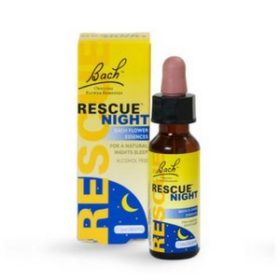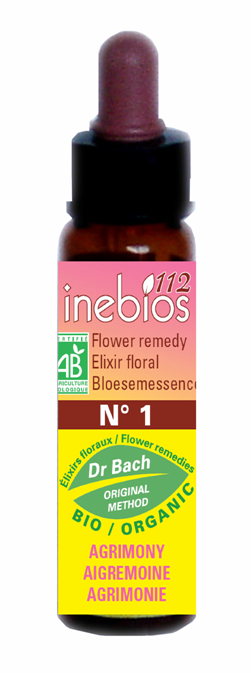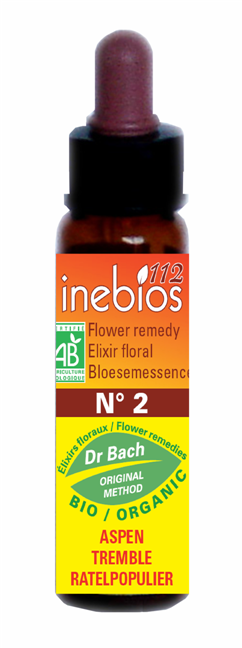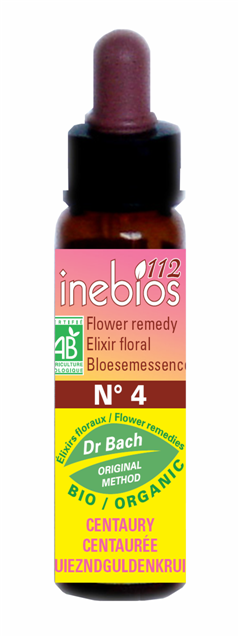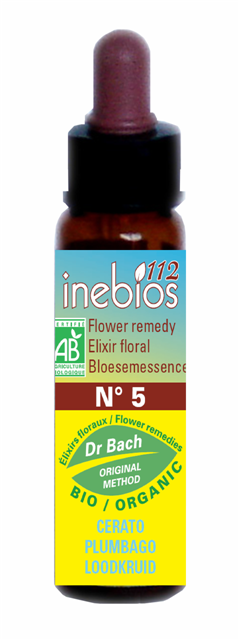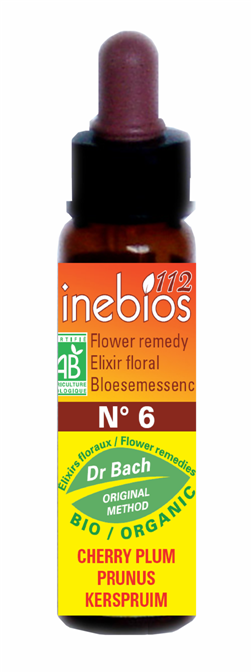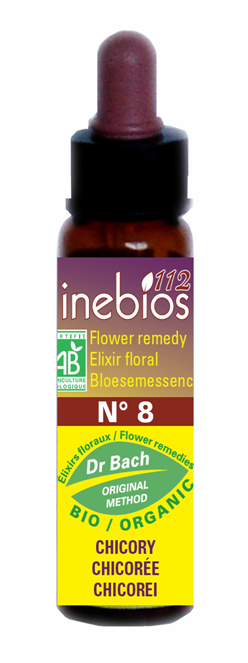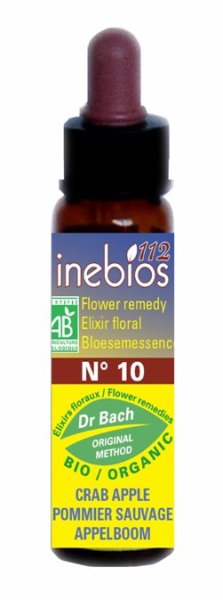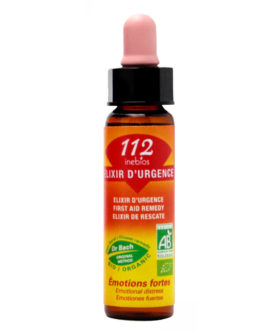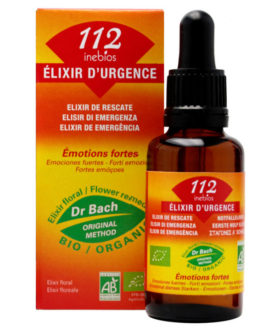Bachflowers
Pine for self-doubt, olive for strength and wild rose for joie de vivre! When Dr. Edward Bach developed his flower therapy in the 1930s, he assumed that all organic diseases have their origin on an emotional, mental or spiritual level. In order to heal these dispositions (and thus the human being), he relies on the subtle effects of certain wild growing plants. Today there are many people who swear by Bach Flowers and use them, for example, to achieve inner stability and balance.
What are Bach Flowers?
Bach Flowers are essences from wild growing plants, which are dissolved in spring water and taken as drops. The individual flower essences are assigned to certain negative states of mind, which Dr Bach himself categorised at the time. According to Bach, those out of balance states of mind are the reason for the development of all diseases. Through the flower essences it is possible to regulate these negative states of mind and thereby bring about a healing. There are 38 essences in total: One for every unbalanced state of mind.
Where do Bach flowers come from?
Bach flowers do not grow on trees or in rivers: they are produced. There are two processes during which the flowers and plants release their healing energy into the spring water. The more common method involves placing the plants in the water for several hours at the peak of flowering and exposing the mixture to the sun. To preserve the essence, alcohol is then added to the water in a ratio of 1:1. The resulting mixture is then diluted with water in a ratio of 1:240. In the second method, the essence is created by heating the flowers in or with spring water.
What effect do Bach flowers have?
For each of the 38 mood disorders described by Dr. Bach, there is a flower essence that has a positive effect on the respective imbalance. What takes place during the therapy is a positive change in precisely those emotional states which, according to Dr. Bach, manifest themselves in a change in the feelings and ways of thinking of the respective person. The Bach Flowers therefore bring about an improvement in the mental, spiritual or emotional state, even before it can worsen and possibly lead to physical illness (e.g. stomach ulcers caused by stress or anxiety).
What do Rescue drops do?
The Bach Flower Emergency Drops aka Rescue Drops contain the essences of five flowers. Each of these five flowers has a positive effect on emotions that most people experience under enormous stress or in exceptional situations. The emergency drops are intended to help to regain inner balance in a mental emergency situation (for example, a death in the family) instead of “closing”.
How to use them: How do I take Bach Flowers?
The homeopath or the practitioner decides which Bach Flowers to use based on the feelings and moods described by the patient. Traditionally, Bach flowers are given in drop form (two to four drops) directly on the tongue or in a glass of still water for both acute and chronic conditions. However, they can also be administered as globules or used externally (for example as an ointment or on wraps and compresses). It is also possible to apply the Bach Flower remedies to wrists or temples.
How long can I take Bach Flower remedies?
There is no fixed rule as to how long you can or may take Bach Flower remedies. However, as it is a naturopathic preparation with no known side effects, there is no reason why it should not be taken for several weeks or even months. Basically, the following applies: As long as the state of mind for which you started the therapy continues, you should continue taking the Bach Flowers.
Which Bach Flowers do I need?
|
Bach Flower Nr. 1
Agrimony
Show feelings and perceive them yourself
|
Bach Flower Nr. 11
Elm
equal to the great task
|
Bach Flower Nr. 21
Mustard
Melancholy Depression
|
Bach Flower Nr. 31
Vervain
the
Do-gooder
|
|
Bach Flower Nr. 2
Aspen
indefinite fears
|
Bach Flower Nr. 12
Gentian
Pessimism Optimism
|
Bach Flower Nr. 22
Oak
Sense of duty
|
Bach Flower Nr. 32
Vine
flexible leader
|
|
Bach Flower Nr. 3
Beech
Critics and tolerance
|
Bach Flower Nr. 13
Gorse
regain hope
|
Bach Flower Nr. 23
Olive
Vitality Reconvalescence
|
Bach Flower Nr. 33
Walnut
New beginning
|
|
Bach Flower Nr. 4
Centaury
own will, self-esteem
|
Bach Flower Nr. 14
Heather
Ego-relationship
To be seen
|
Bach Flower Nr. 24
Pine
Feeling guilty, letting go
|
Bach Flower Nr. 34
Water Violet
Pride Reserved
|
|
Bach Flower Nr. 5
Cerato
Trust
into the inner voice
|
Bach Flower Nr. 15
Holly
Love, life
|
Bach Flower Nr. 25
Red Chestnut
excessive concern for others
|
Bach Flower Nr. 35
White Chestnut
Thoughts circulate in the head
|
|
Bach Flower Nr. 6
Cherry Plum
Emotional Stasis
|
Bach Flower Nr. 16
Honeysuckle
Living in the past
|
Bach Flower Nr. 26
Rock Rose
Fear Panic
|
Bach Flower Nr. 36
Wild Oat
Finding the task of life
|
|
Bach Flower Nr. 7
Chestnut Bud
the learning flower
for kids & adults
|
Bach Flower Nr. 17
Hornbeam
mental exhaustion or fatigue
|
Bach Flower Nr. 27
Rock Water
too hard on yourself
|
Bach Flower Nr. 37
Wild Rose
Resignation without drive
|
|
Bach Flower Nr. 8
Chicory
Possessive “supermother“
|
Bach Flower Nr. 18
Impatiens
Nervousness due to impatience
|
Bach Flower Nr. 28
Scleranthus
Making decisions
|
Bach Flower Nr. 38
Willow
Resentment and bitterness
|
|
Bach Flower Nr. 9
Clematis
the imaginative daydreamer
|
Bach Flower Nr. 19
Larch
Self-confidence
|
Bach Flower Nr. 29
Star of Bethlehem
Trauma Shock
|
Bach Flower Nr. 39
Rescue
First aid and emergency drops
|
|
Bach Flower Nr. 10
Crab Apple
Order and purity
|
Bach Flower Nr. 20
Mimulus
identifiable anxieties
|
Bach Flower Nr. 30
Sweet Chestnut
Desperation
|
|
Read moreShow less
Showing 1–15 of 92 results









